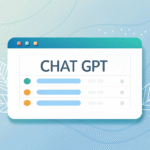Now Reading: How to overcome exam fear in 7 steps: Your guide to conquering anxiety and acing your tests
-
01
How to overcome exam fear in 7 steps: Your guide to conquering anxiety and acing your tests

How to overcome exam fear in 7 steps: Your guide to conquering anxiety and acing your tests
Your heart isn’t just pounding it’s hammering a frantic rhythm against your ribs. Your palms are not just sweaty, they’re slick and cold, staining the edges of the textbook you clutch. Your mind, moments ago a finely tuned machine, is now a blur of white static, the facts you so meticulously filed away vanished into a suffocating fog of fear. As you stare at the stark, uncompromising lines of the exam paper, a wave of sheer, paralyzing panic washes over you, stealing your breath and your capability.
If this visceral, paralyzing dread is familiar, you are not alone. This is exam fear, or test anxiety a universal experience that can turn a simple evaluation into a monumental, personal obstacle. It’s more than just “nerves”; it’s a full-scale physiological and psychological hijacking that forces you to perform far below your actual, brilliant capability.
But here is the most important truth: Exam fear is not an iron cage. It is a manageable, conquerable condition.
The key is not to “will” yourself to calm down. The real solution is a systematic, proactive approach that cuts through the anxiety, targeting its very roots. This guide is your arsenal of strategies, walking you through 7 powerful, actionable steps to not just manage, but conquer your exam fear for good. This is about equipping the smart, capable person you already are with the battle-tested tools to not just survive, but thrive under pressure.
Let’s begin your transformative journey from panic to peace, and from fear to focus.
Step 1: Deconstruct the dragon – Understand your specific fear
You cannot defeat a monster you cannot clearly see. That vague, shimmering feeling of “exam fear” is the shapeless monster. Your first act of courage is to shine a bright, uncompromising light on it and break it down into its specific, addressable parts. What, precisely, are you actually terrified of?
Grab a journal not just a scrap of paper, but a designated space and answer these questions with brutal, unflinching honesty:
The “What If” fear: Exposing the catastrophic story
. “What if I fail this exam and my entire future career path collapses?”
. “What if I disappoint my parents/teachers, and that look of disapproval confirms I’m not good enough?”
. “What if this score proves, definitively, that I am not smart or capable?”
. “What if my mind goes completely blank and I’m left staring at the page, unable to access a single fact?”
The root cause fear: Digging into the source
. Fear of failure: The consequences of a poor score feel like an existential threat.
. Fear of the unknown: The shuddering uncertainty of what questions await you.
. Perfectionism: The crushing belief that anything short of an A is an abject personal failure.
. Past trauma: A previous, painful exam experience is haunting the present moment.
Your action plan: Robbing the fear of its power
1. Write it down: Physically transfer your fears from the murky chaos of your mind onto the clean, controlled space of the page. This act immediately robs them of their emotional power. They are no longer nebulous, overwhelming emotions; they become specific, cold, addressable statements.
2. Challenge the narrative: For every dramatic “what if,” craft a rational, resilient counter-statement.
. The fear: “What if I fail?” The rational response: “If I fail, it will be a setback, but it is not a definition of my worth. I can seek tutoring, re-take the exam, and learn from the experience. My life will continue.“
. The Fear: “I’ll forget everything!” The rational response: “I have systematically studied this material. My brain has stored the information. If panic clouds my memory, I will use my calming techniques to let the nervous system settle, and the facts will then resurface.“
By deconstructing your fear, you transform yourself from a helpless victim of your emotions into a clear-eyed observer and a strategist. This is the fortified bedrock for everything that follows.
Step 2: Build an unshakeable foundation – Master your material with a plan
There is no more potent antidote to anxiety than genuine, thorough, and smart preparation. Confidence is not an inherent trait; it is a byproduct of competence. When you know, deep in your bones, that you have put in the strategic, focused work, the insidious voice of doubt grows quieter, almost to a whisper.
A last-minute, haphazard sprint is a perfect recipe for anxiety. You need a strategic, military-grade plan that replaces fear with certainty.
Your action plan: Create a battle plan, not a wish list
1. Chunk it down: View the entire syllabus not as a terrifying mountain, but as a series of small, manageable “chunks” or topics. Micro-tasks feel achievable; macro-tasks induce panic.
2. The study schedule: Do not study when you “feel like it.” Use a calendar and assign specific, realistic chunks to specific days and times. Embrace the POMODORO technique 25 minutes of laser-focused study followed by a 5-minute restorative break. This maintains high concentration and prevents burnout.
3. Active vs. passive learning: Rereading notes is passive and creates an illusion of competence. Engage your brain vigorously:
. Retrieval practice: Be your own demanding teacher. Test yourself constantly. Use flashcards, create your own “pop quiz” questions, or close the book and try to write down everything you remember on a blank page.
. The Feynman technique: Try to explain the topic in the simplest, most elegant terms possible, as if teaching a child. Where your explanation breaks down, you have exposed a gap in your understanding.
. Teach someone else: The ultimate test of mastery. Explain a concept aloud to a friend, a wall, or even your pet. Verbalizing the information cements it.
. Prioritize: Ruthlessly identify the high-weightage topics and the areas you find most difficult. Devote disproportionately more time to these. Stop reviewing the easy concepts just because they give you a fleeting, comfortable feeling of knowing.
Walking into an exam knowing you executed a systematic, intelligent plan is a powerful, undeniable confidence booster. It silences the fear of “I don’t know if I’m ready” with the quiet, powerful certainty of “I have done everything in my control.”
Step 3: Train your body to calm your mind – Master relaxation techniques
Exam fear is not merely an intellectual problem; it is a body-wide emergency. When you sense a threat (like the exam), your “fight-or-flight” system explodes: adrenaline floods your system, your heart thrashes, your muscles tighten into rock-hard knots. You cannot think clearly in this state because your biology has prepared you for a physical sprint, not a cognitive deep dive.
The incredible news is that you can hack this biological system. By consciously relaxing your body, you send an irrefutable “all clear” signal to your stressed brain, forcing it to settle down.
Your action plan: Practice these techniques daily : You are training a muscle!
1. Diaphragmatic breathing (Belly breathing): The Vagal nerve reset
. Find a comfortable spot. Place one hand gently on your chest and the other on your belly.
. Inhale slowly through your nose for a count of 4, feeling the hand on your belly rise the hand on your chest should remain still. You are breathing into your deepest capacity.
. Hold this breath, the feeling of quiet fullness, for a count of 4.
. Exhale slowly through your mouth for a count of 6, allowing your belly to completely fall and flatten.
. Repeat this slow, deliberate cycle for 2-5 minutes. This immediately activates the parasympathetic nervous system (your body’s “rest and digest” mode).
2. The 5-4-3-2-1 grounding technique:
. This is your emergency brake when panic spirals. It forces your mind out of the “future catastrophe” and back into the safe reality of the present moment.
. Acknowledge 5 things you can SEE (the grain in the wood, a shadow, the colour of your pen).
. Acknowledge 4 things you can FEEL (the cool sensation of the desk, your feet pressing into the floor, the fabric of your shirt).
. Acknowledge 3 things you can HEAR (the ticking of a clock, distant traffic, your own deep breathing).
. Acknowledge 2 things you can SMELL (the faint scent of coffee, or the paper).
. Acknowledge 1 thing you can TASTE (the lingering taste in your mouth).
3. Progressive muscle relaxation (PMR): Systematically move through your body, tensing a muscle group fiercely for 5 seconds, then releasing it completely for 10 seconds, noting the profound difference between tension and relaxation. Start with your toes, move to your calves, thighs, abdomen, hands (clench your fists!), arms, shoulders, and finally, your face (squint and frown, then release).
Crucially, do not wait for the exam day to try these. Practice them during study breaks, while waiting in line, and before bed. You are building a powerful, internal muscle of calm.
Step 4: Reframe your mindset – The power of cognitive restructuring
Your thoughts are the architects of your emotional reality. If your internal monologue is a torrent of negativity, self-criticism, and catastrophic predictions, your emotions will dutifully follow. Step 1 was identification; Step 4 is radical change.
This is called cognitive restructuring, the process of becoming the editor and fact-checker of your own mind.
Your action plan: Become the editor of your thoughts
1. Catch the cognitive distortion: Learn to flag automatic, destructive thoughts. Common exam distortions include:
. Catastrophizing: “If I mess up this one section, I’ve destroyed my chances at university.”
. All-or-nothing thinking: “If I don’t get a perfect score, I am a total failure.”
. Fortune telling: “I know I’m going to totally blank out on the essay question it’s inevitable.”
. Challenge the thought: Subject your internal critic to rigorous cross-examination:
“What is the irrefutable evidence for this thought? What are the facts against it?”
. “Is this thought helpful? Is it moving me closer to my goal or paralyzing me?”
. “What would I tell my brilliant, capable best friend if they told me this?” (You are rarely as cruel to others as you are to yourself.)
2. Replace it with a balanced, empowering thought: Do not try to simply “think happy thoughts.” Replace the lie with a more realistic, productive truth.
. Instead of: “I’m going to fail.” Try: “I am well-prepared, and I will commit to doing my absolute best. That is the only thing I can truly control.”
. Instead of: “This is too hard.” Try: “This is a significant challenge, but I have the resilience and intelligence to break it down and overcome it.”
. Instead of: “Everyone is smarter than me.” Try: “I am on my unique path. My focus is on my own performance and growth, not comparison.”
Create a list of positive affirmations (“I am capable and prepared,” “I am calm and focused”) and keep them visible. Repeating these is not just wishful thinking; it is the slow, deliberate process of rewiring your brain’s default, anxious pathways.
Step 5: Optimize your machine – The role of sleep, nutrition, and exercise
You are not merely a consciousness floating in the air; you are a complex, biological organism. Trying to perform cognitive high-wire acts with a sleep-deprived, poorly nourished body is like attempting to win a Formula 1 race with flat tires and a sputtering, empty fuel tank.
Your action plan: Fuel for peak performance
1. Sleep: The non-negotiable memory consolidator
. During deep sleep, your brain is busy transferring information from your short-term, volatile memory into long-term, accessible storage. Pulling an all-nighter is not heroic; it is a direct act of sabotage, forcing you to take an exam with a half-empty, disorganized hard drive.
. Aim for a sacred 7-9 hours of quality sleep, especially in the critical week before the exam. Create a relaxing, non-negotiable bedtime ritual: no bright screens an hour before bed, dim the lights, read a physical book.
2. Nutrition: Brain food vs. anxiety triggers
. Avoid: Excessive sugar, high-dose caffeine, and heavy, processed foods. They induce dramatic energy spikes and crashes that mirror and exacerbate anxiety symptoms.
. Embrace: Foods that offer a steady, sustained release of energy: complex carbohydrates (oats, brown rice), clean proteins (fish, chicken, nuts), and healthy fats (avocado, olive oil).
. Stay hydrated: Even mild dehydration can lead to headaches, brain fog, and fatigue. Keep a water bottle on you like a vital appendage while studying and on exam day.
3. Exercise: The natural anti-anxiety pill
. Physical activity is a powerful, primal stress-reliever. It burns off the excess adrenaline and cortisol that make you feel jumpy and anxious, and simultaneously releases endorphins, your body’s natural mood lifters.
. You don’t need a grueling gym session. A 20-30 minute brisk walk outdoors, a light jog, or a stretching yoga session can work wonders for clearing the cognitive clutter. Schedule this brain break into your study plan; it is essential, not optional.
Step 6: Game day strategy – Your plan for execution
The day has arrived. Your preparation phase is over. This is not the day to cram that will only ignite anxiety. Today is about flawless execution of the tools you’ve built.
Your action plan: A minute-by-minute guide
1. The night before: Eliminate all last-minute decisions. Lay out your entire “Exam Kit”: admit card, favorite pens, water bottle, a reliable watch. Have a healthy, light dinner. Get your full 8 hours of sleep.
2. The morning of: Eat a balanced breakfast with protein for sustained energy. Avoid drinking so much coffee that you feel shaky. Listen to calming music or an empowering podcast on your way to the exam venue. Arrive early and settled.
3. In the exam hall, before you start:
. If you feel that hot, rising wave of panic, DO NOT pick up your pen immediately. Your brain is locked up.
. Take 60 seconds for yourself. Close your eyes and anchor your mind with your belly breathing (Step 3). Do a quick 5-4-3-2-1 grounding exercise. This minute is a vital investment that unlocks your focus, not a waste of time.
4. During the exam: The smart approach
. Read the entire paper carefully. Skim all sections to get a cognitive map of the terrain. This drastically reduces the “fear of the unknown.”
. Start with the easiest questions. Get quick wins. This builds immediate momentum and confidence, flooding your system with positive reinforcement and ensuring you secure the easiest marks first.
. Manage your time relentlessly. Allocate a strict amount of time for each section. If you hit a roadblock on a question, circle it, move on, and do not look back. Never let one difficult question hijack your entire performance.
. The “Blank Out” procedure: This is the moment you trained for. Put your pen down. Close your eyes. Take three slow, deep belly breaths. The information is stored; your nervous system is simply blocking the access. Give it 30 seconds of quiet calm, and you will be amazed as the memory begins to gently, steadily return.
Step 7: The long game – Cultivate a healthy perspective
Finally, you must place the exam into its proper, objective context. It is a single, isolated event, not a definitive measure of your value or identity.
Your action plan: Zoom out and find your center
1. Practice self-compassion: Become your own most nurturing, encouraging friend. If your closest friend was devastated by a test score, you wouldn’t label them a failure. You would offer grace, perspective, and support. Offer yourself the same kindness, patience, and non-judgment.
2. Visualize beyond the exam: Take a moment to vividly visualize your life a week, a month, and a year from now. No matter the result good, bad, or indifferent the exam will simply be a small part of your past, a closed chapter. You will have moved on to new challenges, new people, and new joys.
3. Separate your worth from your score: Your curiosity, your creativity, your unique intelligence, your empathy, and your character are vastly complex qualities that a single percentage cannot possibly measure. You are a multi-faceted human being, and this test measures a very narrow skill set on one single day. Your score does not define your destiny.
Conclusion: You are the captain of your ship
Exam fear is a storm, but you are not a helpless vessel caught in its turmoil. You are the skilled captain. The seven steps in this guide are your navigational instruments, your life vest, and your powerful steering wheel.
. Understand your fear.
. Prepare with an intelligent, solid plan.
. Train your body to find deep calm.
. Reframe your negative thoughts.
. Fuel your mind and body optimally.
. Execute your game-day strategy flawlessly.
. Maintain a broad, healthy perspective.
This transformation is a skill set, and like any skill a sport, an instrument it requires deliberate practice. Start now. Implement one step at a time. Be patient and exquisitely kind to yourself throughout the process.
The ultimate goal is not to eliminate all nerves a little adrenaline can actually sharpen your focus. The goal is to ensure that fear is no longer in control of you. The goal is to walk into that exam hall, feel the familiar flutter of anxiety, acknowledge it as an old friend, and then use your trained tools to channel that energy into focused, brilliant performance.
You have the power to overcome this. Take that first, deep, belly breath, and take the first step today.
Stay Informed With the Latest & Most Important News
Previous Post
Next Post
-
 0110 Study techniques that actually work (According to Science)
0110 Study techniques that actually work (According to Science) -
 02The POMODORO technique explained: Study smarter, not longer
02The POMODORO technique explained: Study smarter, not longer -
 03How to use ChatGPT to study any subject efficiently
03How to use ChatGPT to study any subject efficiently -
 04How to overcome exam fear in 7 steps: Your guide to conquering anxiety and acing your tests
04How to overcome exam fear in 7 steps: Your guide to conquering anxiety and acing your tests -
 05How to remember anything you read: A complete guide to reading retention and comprehension
05How to remember anything you read: A complete guide to reading retention and comprehension -
 06How to avoid the comparison trap online: Your heart deserves better than this digital prison
06How to avoid the comparison trap online: Your heart deserves better than this digital prison -
07The best free apps for students in 2025: Essential tools for academic success





